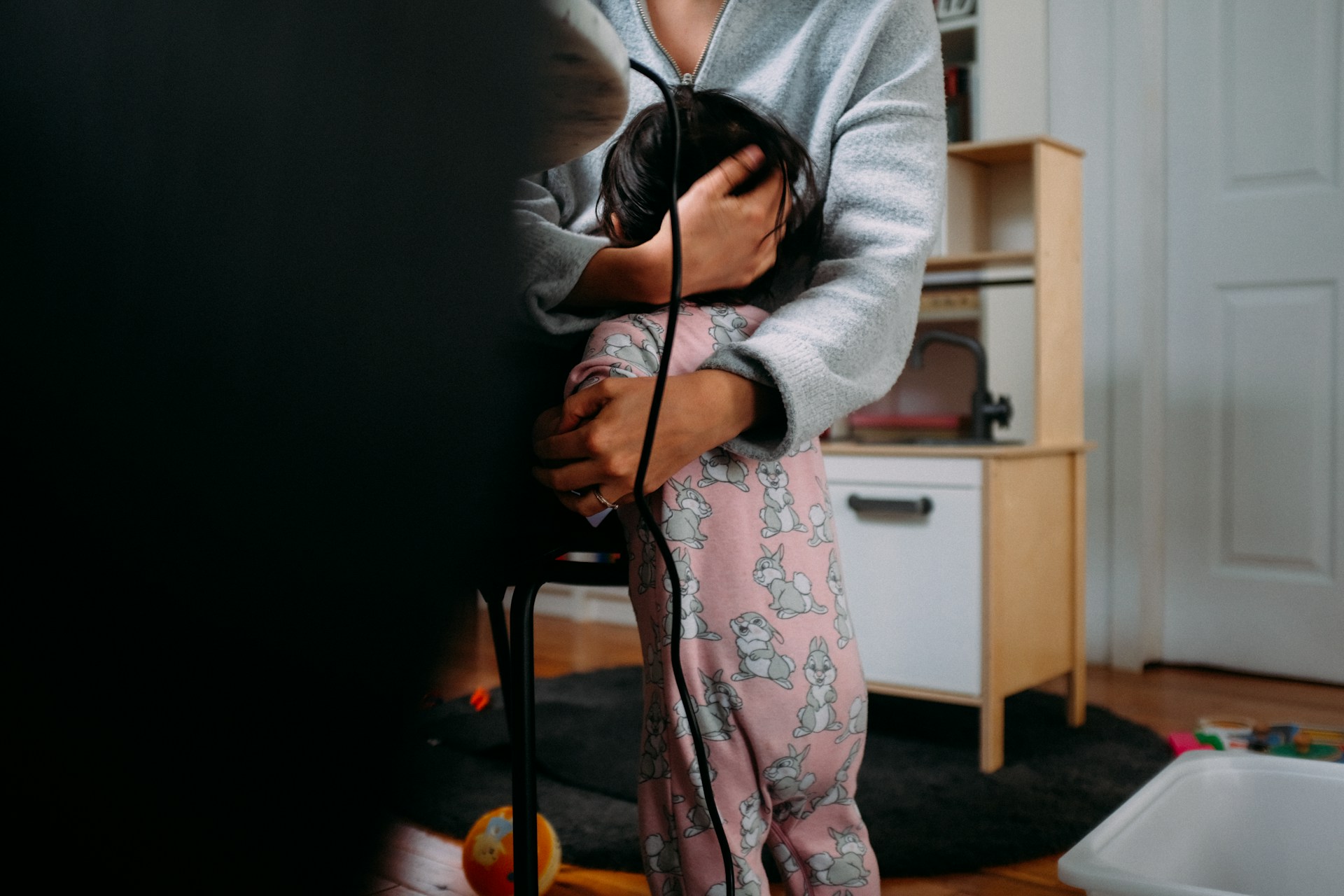Naughtiness, rebellion, tantrums, and outbursts are all things every parent knows to expect in a child, but these can also be signs of bipolar disorder in children. Although it is quite rare, bipolar disorder can also occur in younger children, causing extreme personality shifts ranging from emotional highs to depressing lows.
Bipolar disorder, also known as manic depression, more commonly develops in older teenagers and young adults, but it has been known to appear in children as young as six. The diagnosis of bipolar disorder is somewhat controversial, with some experts believing it is rare and being overdiagnosed, while others believe the opposite is true.
While it is not easy to diagnose in children, there is now enough study in this field that proves that early recognition and professional help are crucial.
This article has been written to help every parent have a basic awareness and understanding of:
- Bipolar disorder in children.
- Symptoms of bipolar disorder.
- Causes of bipolar disorder in children.
Understanding bipolar disorder in children
 The term bipolar in its most basic form means having two poles or directly opposite extremities. For example, in physics, the Earth is considered bipolar due to its north and south poles.
The term bipolar in its most basic form means having two poles or directly opposite extremities. For example, in physics, the Earth is considered bipolar due to its north and south poles.
In a mental health context, this definition also applies because bipolar disorder refers to a condition characterized by mood and behavior extremes. These extremes oscillate between two different states known as manic and depressive states.
In manic episodes, individuals experience extreme excitement, hopefulness, irritability, restlessness, rapid speech, and increased energy. They may set unrealistic goals and exhibit high-risk behaviors.
In depressive phases, individuals feel sadness, hopelessness, guilt, and loss of interest or pleasure in everyday activities. Sleep disturbances, appetite changes, and suicidal thoughts may also occur.
Bipolar disorder in children is characterized by significant irritability, mood swings, and other symptoms. While there’s no cure, effective treatment, including therapy and medications, can help children lead healthy lives. Diagnosing bipolar in children is extremely complex, but there are some early warning signs someone’s primary caregivers can quickly spot.
Recognizing symptoms of bipolar disorder in children
Extreme mood swings
A child with bipolar disorder may experience intense mood swings that go beyond typical childhood behavior. Look out for sudden switches between extreme elation or hyperexcitement (mania) followed by deep mournfulness or sorrow (depression).
Changes in energy levels
Check if a child’s energy levels seem to fluctuate constantly between high energy, bouncing around, not being able to sit still or sleep (manic), and low energy, major fatigue, or withdrawal (depressive).
Irritability and aggression
A child with bipolar can suddenly become frequently and suddenly irritable, aggressive, or easily frustrated in situations where this is uncalled for.
Changes in sleep patterns
Make note of major shifts in a child’s sleep routines. Manic episodes may be characterized by insomnia, while depressive episodes cause a child to sleep excessively.
Difficulty concentrating
In a school-going kid, bipolar disorder may affect their ability to focus and concentrate. Their grades might start to decline significantly in a way that is out of character.
Remember that all these signs alone do not always necessarily confirm bipolar disorder in a child, but many of them combined usually warrant further evaluation by a mental health professional.
Causes of bipolar in children
 Understanding the different causes of bipolar may not enable you to prevent the disorder, but it can help you understand how the child developed the condition and be better equipped to manage it.
Understanding the different causes of bipolar may not enable you to prevent the disorder, but it can help you understand how the child developed the condition and be better equipped to manage it.
Although there’s no certain way to prevent bipolar in children, certain factors that increase the risk of having bipolar disorder include:
Genetics
The most common risk factor is if there is a history of bipolar disorder or other mood disorders in the family, which can contribute to the risk.
Stress and trauma
Another factor that may play a role in the development of bipolar is a history of adverse childhood experiences, like trauma, physical abuse, and chronic stress. Likewise physical trauma to the brain, including concussions and head injuries, may increase the risk of bipolar disorder.
Neurobiology
Sometimes the bipolar condition is associated with evidence of abnormalities in a child’s brain structure and function, which can influence susceptibility.
Environmental triggers
Exposure to harmful environmental toxins, mind-altering substances, and chemicals like steroids that cause disruptions in sleep-wake cycle rhythms might contribute.
Seasonal factors
 While they may not be a direct cause, seasonal factors appear to play some role in the onset of bipolar disorder. Studies have shown that the chance of onset increases in spring, and the rapid increase in hours of bright sunshine is thought to trigger depression and mania in children.
While they may not be a direct cause, seasonal factors appear to play some role in the onset of bipolar disorder. Studies have shown that the chance of onset increases in spring, and the rapid increase in hours of bright sunshine is thought to trigger depression and mania in children.
Remember that there’s no foolproof way to prevent bipolar disorder in children, but experts say early intervention and proper management are crucial and can help bring the symptoms under control.
Getting help with bipolar disorder
Several strategies may help reduce the risk or manage bipolar symptoms. Bipolar disorder is a chronic mental health condition that requires ongoing treatment and careful management throughout someone’s life. Each child’s experience with bipolar disorder can vary, so effective management can only be directed by a professional with the primary caregiver’s help.
Some suggestions mental health professionals advise to manage bipolar disorder in children might include:
- Ensuring the child gets enough sleep and gets the recommended 9 to 12 hours of sleep for children aged 6 to 12, and 8 to 10 hours for teens.
- Treatment for kids with bipolar often involves a combination of medication (such as mood stabilizers, antidepressants, and antipsychotics) and therapy. Psychoeducation and school support are also greatly encouraged.
- Early intervention is highly recommended once you notice erratic mood swings or other concerning behavior in the child that seems to indicate bipolar symptoms.
- Ensuring a healthy and organic lifestyle for the child with regular sleep patterns, physical activity, and a balanced diet are recommended to help a bipolar child settle.
- Teaching kids who have the condition practical coping skills to manage stress and emotions will help. This may involve mindfulness techniques, relaxation exercises, and emotional regulation strategies.
- A supportive family structure and environment can mitigate bipolar triggers, and open communication and understanding are known to keep the child grounded.
Understanding bipolar in a child and all these factors that surround the disorder is the first crucial step in giving a child a chance to overcome it and live a relatively normal life.
 The next step is to seek out a mental health professional who can help with the diagnosis of bipolar disorder and any other conditions. A professional is equipped to help craft a well-being plan and show you how to manage the impact of the diagnosis on the child and on the rest of the family.
The next step is to seek out a mental health professional who can help with the diagnosis of bipolar disorder and any other conditions. A professional is equipped to help craft a well-being plan and show you how to manage the impact of the diagnosis on the child and on the rest of the family.
Most importantly, you can get safe treatment and medication plans to regulate moods and settle the child until they can function well without disruptions in their daily life. Dealing with a child who is bipolar is extremely challenging. A therapist can help you, the parent, learn your own coping mechanisms, like how to create balance between work, leisure, family, rest, and socializing.
Professionals can also recommend community support groups that provide support for families with a family member or child with bipolar disorder and offer additional support resources. Seeking professional evaluation and support is essential for managing bipolar disorder effectively, so if you suspect your child may be showing signs of bipolar disorder, consult a healthcare provider for a comprehensive assessment.
If you have been reading this article and you feel like you may benefit from counseling for yourself or your child, do not hesitate to get in touch. You can use any of the different ways to contact us and let us direct you to the right people equipped to help in this delicate mental health challenge.
You don’t have to suffer through uncertainty and frustration all alone; call us today.
“Bipolar Disorder”, Courtesy of Micheile Dot Com, Unsplash.com, CC0 License; “Hiding”, Courtesy of Fernando Dearferdo, Unsplash.com, CC0 License; “Comfort”, Courtesy of Nathan Dumlao, Unsplash.com, CC0 License; “Scream”, Courtesy of Jason Rosewell, Unsplash.com, CC0 License
-
Jane Zerabruk: Author
As your counselor, I will share professional and personal therapeutic strategies that will help you live a more balanced, connected, and joy-filled life in Christ. I offer counseling for children, teens, adult individuals, and families. Whether you’r...
-
Kate Motaung: Curator
Kate Motaung is the Senior Writer, Editor, and Content Manager for a multi-state company. She is the author of several books including Letters to Grief, 101 Prayers for Comfort in Difficult Times, and A Place to Land: A Story of Longing and Belonging...
DISCLAIMER: THIS ARTICLE DOES NOT PROVIDE MEDICAL ADVICE
Articles are intended for informational purposes only and do not constitute medical advice; the content is not intended to be a substitute for professional medical advice, diagnosis, or treatment. All opinions expressed by authors and quoted sources are their own and do not necessarily reflect the opinions of the editors, publishers or editorial boards of Stone Oak Christian Counseling. This website does not recommend or endorse any specific tests, physicians, products, procedures, opinions, or other information that may be mentioned on the Site. Reliance on any information provided by this website is solely at your own risk.







